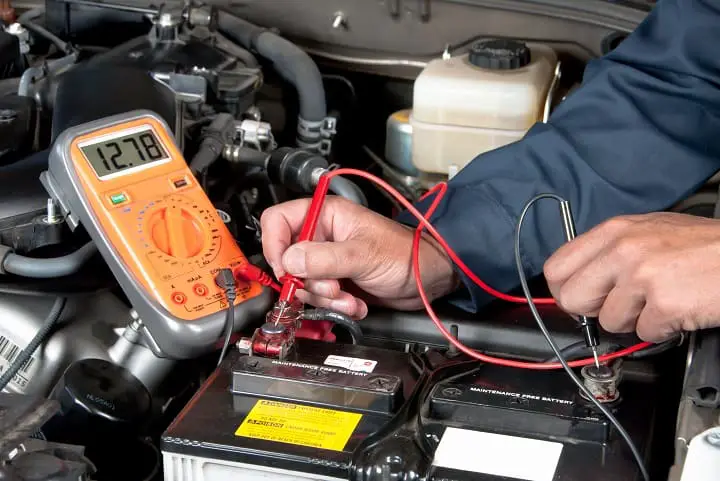If the battery of your car is down then it won’t start which is a very common scenario. But if the problem is not with the battery then there is a higher possibility that the problem is with the starter solenoid.
The starter solenoid sends electrical current to the starter motor and the starter motor turns the engine on. If the starter solenoid does not function properly the vehicle may not start. But the reason behind not functioning the solenoid properly is not always a bad solenoid, sometimes a down battery may also cause the problem.

In this article, you will learn how to test the starter with a screwdriver step by step. Let’s narrow down the reason behind the issue by following 5 simple steps.
In this post we'll cover:
5 Steps to Test the Starter Using a Screwdriver
You need a voltmeter, a pair of pliers, a screwdriver with an insulated rubber handle to complete this operation. You also need help from a friend or an assistant. So call him before stepping into the process.
Step 1: Locate the Battery

Car batteries are generally located in one of the front corners inside the bonnet. But some models come with batteries located in the boot to balance the weight. You also can identify the location of the battery from the handbook provided by the manufacturer.
Step 2: Check the Voltage of the Battery
The car battery should have enough charge to start the solenoid and turn the engine on. You can check the voltage of the battery using a voltmeter.

Set the voltmeter to 12 volts and then connect the red lead to the positive terminal of the battery and the black lead to the negative terminal.
If you get a reading below 12 volts then the battery either needs to be recharged or replaced. On the other hand, if the reading is either 12 volt or higher then go to the next step.
Step 3: Locate the Starter Solenoid

You will find a starter motor connected to the battery. The solenoids are generally located on the starter motor. But its position can vary depending on the manufacturers and the model of the car. The best way to find the location of the solenoid is to check the manual of the car.
Step 4: Check the Starter Solenoid
Pull out the ignition lead using a pair of pliers. Then connect the red lead of the voltmeter to one end of the ignition lead and the black lead to the frame of the starter.

Now you need the assistance of a friend. He should turn on the ignition key to start the engine. If you get a reading of 12-volt then the solenoid is fine but reading below 12-volt means you need to replace the solenoid.
Step 5: Start the Car
You will notice a large black bolt connected to the starter motor. This large black bolt is called the post. The tip of the screwdriver should be connected to the post and the metal shaft of the driver should remain in touch with the terminal leading out of the solenoid.

Now the car is ready to start. Ask your friend to get in the car and turn the ignition to start the engine.
If the starter motor turns on and you hear a humming sound then the starter motor is in good condition but the problem is with the solenoid. On the other hand, if you cannot hear the humming sound then the starter motor is defective but the solenoid is okay.
Final Words
The starter is a small but vital component of the car. You cannot start the car if the starter does not function properly. If the starter is in bad condition then you have to change the starter, if the problem is occurring because of the bad condition of the battery you either have to recharge the battery or replace it.
A screwdriver is a multitasking tool. Besides the starter, you can also test the alternator with a screwdriver. It is a simple process but you should be careful about the safety issues. For example, your body should not be in contact with any metal part of the engine block or the screwdriver.
I'm Joost Nusselder, the founder of Tools Doctor, content marketer, and dad. I love trying out new equipment, and together with my team I've been creating in-depth blog articles since 2016 to help loyal readers with tools & crafting tips.
